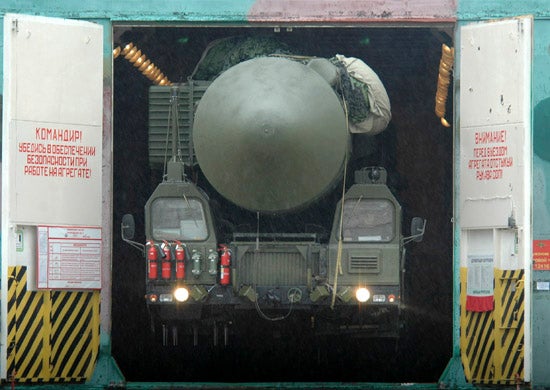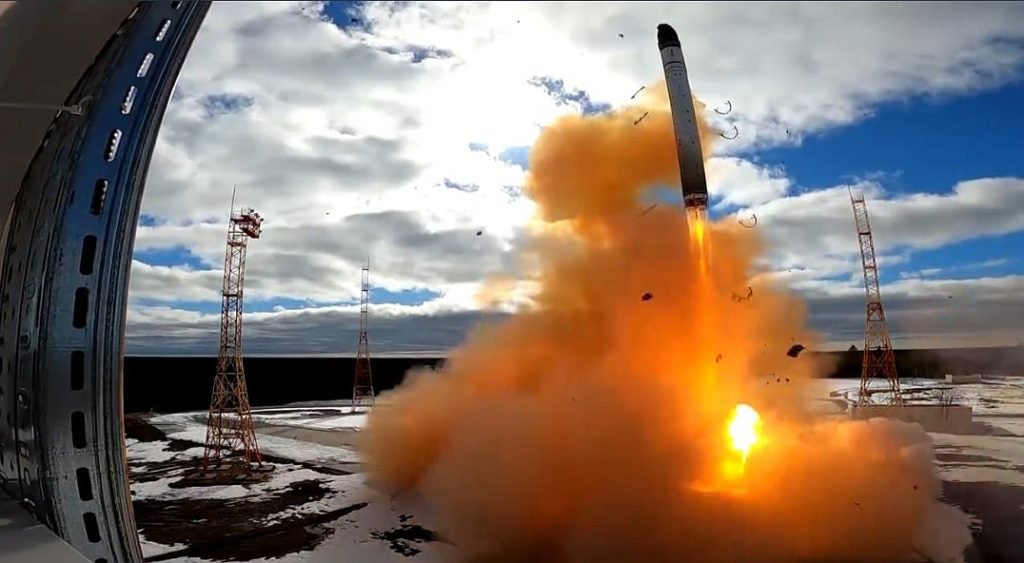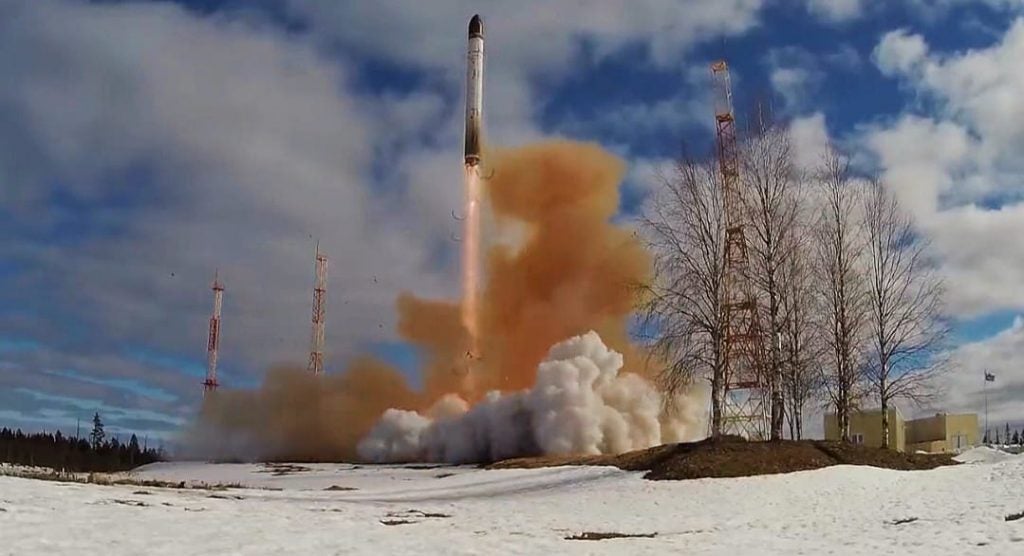Russia Conducts First Test Launch of Sarmat Intercontinental Ballistic Missile
As Russia’s attacks on Ukraine continue, the Russian Ministry of Defense reported that the first test launch of the Sarmat intercontinental ballistic missile, which can carry nuclear warheads, took place on April 20 at 3:12 p.m. Moscow time from the Plesetsk Cosmodrome in the Arkhangelsk region. The ministry continued by saying that the missile launched from the Plesetsk Space Base in the Arkhangelsk region successfully hit a target on Kamchatka Island in the country’s far east.
In a video conference statement following the test launch, Russian President Vladimir Putin congratulated the army on the successful test of the Sarmat missile. Putin said Sarmat will ensure Russia’s security, describing the test as an important event in the development of the Russian army. Putin continued his message by saying that the Sarmat missile is unique in the world, so parties trying to threaten Russia will have to “think twice” before doing so.
Pentagon Press Secretary John Kirby released a statement about Russia’s intercontinental ballistic missile test just hours after Russia tested the Sarmat intercontinental ballistic missile. “Under its new START treaty obligations, Russia had notified the US that it was planning to conduct an intercontinental ballistic missile test. Such testing is routine, and it was not a surprise. It was not deemed be a threat to the United States or its allies,” Kirby said.
The “New START” treaty, which is an extension of the Strategic Arms Reduction Treaties (START 1 and START 2) signed by the United States with Soviet Russia in 1991 and the Russian Federation in 1993, is the last nuclear agreement between Washington and Moscow. Long-range nuclear warheads and missiles are subject to constraints under the treaty. In 2010, the new START treaty was signed in Prague and took effect on February 5, 2011. The ten-year agreement was approved to be extended for another five years by the United States and Russia in February 2021.

RS-28 Sarmat, or SATAN-2, as it is referred to in NATO reports, is a liquid-fueled, MIRV-capable heavy intercontinental ballistic missile (ICBM) developed by the Makeyev Rocket Design Bureau since 2009. Sarmat is one of six new strategic weapon systems unveiled by Putin on March 1, 2018, to replace the R-36M ICBM (SS-18 Satan) in Russia’s inventory.
In a speech to the Russian Parliament in 2018, Vladimir Putin claimed that Sarmat cannot be stopped by any future defense systems, as well as any existing missile defense systems, and said, “Samrat can hit the South Pole, and the North Pole.” Although the missile’s tactical and technical features are currently unclear, Russian experts who spoke at the ARMY-2019 International Military-Technical Forum stated that the Sarmat’s firing range is 18 thousand kilometers. The missile has a payload capacity of around 10 tons and a total launch weight of 200 tons. The missile has a fuel weight of roughly 178 tons, a length of 35.5 meters, and a diameter of 3 meters, and is said to have a sub-orbital flight capability of 35,000 kilometers.

It is not yet clear when the Sarmat missile system, which is expected to enter service with the Russian Strategic Missile Forces after the test program is completed, will be delivered to the Strategic Missile Forces. The delivery of the system to the Strategic Missile Forces will begin this fall, according to Russian news outlet Tass, citing Roscosmos Director-General Dmitry Rogozin, although western sources believe it will take at least another 5 years.

